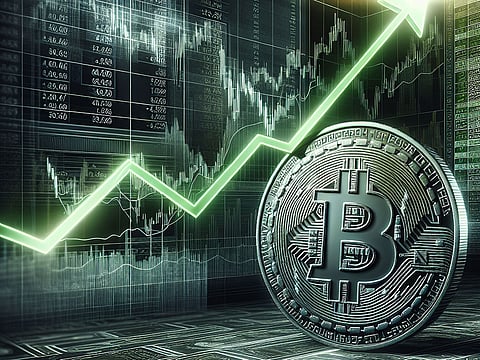Are Bitcoin prices inching their way towards a bubble?
Each price surge Bitcoin goes through comes with higher downsides for small investors

With long-term interest rates clearly on the march higher, there appears to be renewed concerns about asset prices.
Whilst this debate always rages on (for every seller, there is a buyer), there seems to be little doubt that we are in the midst of a spectacular Bitcoin bubble.
Some of the reasons involve all bubbles, whilst others appear to be more specific in nature. Bubbles involve irrational optimists all of which are credulous and looking to get rich quick. With Bitcoin, this phenomena has lasted years, primarily because, as per behavioral finance, the marginal buyer has managed to push prices to the point of creating price dislocations, rather than the traditional ‘efficient market’ hypothesis. (It doesn’t even work in conventional markets for the most part.)
Add obfuscation to the mix, and you have the perfect recipe for everyone who ought to be rich, but no one who understands the underlying dynamics at play.
Buying stock in 1929, and 1999, was given with the same rationale (everyone ought to get rich), but clearly it was a poor strategy in each of those years.
Influencers set the Bitcoin agenda
This brings us to the more critical point: money chases trailing returns, and has little to do with valuations, and everything to do with selling overpriced assets to suckers.
Today, these roles are played by ‘thought leaders’ or ‘influencers’ who play a role in generating mispricing. These ideas spread throughout the internet, get amplified and then impact pricing, with policymakers who amplify such claims with statements that attempt to fundamentally alter policy.
Never mind that we still do not know clearly what the purpose of Bitcoin actually is. In this scenario, the greater the obfuscation the better it is.
A bubble in this asset class in turn spills over to some other categories and soon you have a scenario where everything appears to be inflated. In a broader sense, the share of US equities as a percentage of the MSCI All Country World index has risen from 30% in 1987 to nearly 70% at the end of 2024, suggesting that at some point mean reversion is inevitable.
Meantime, value investors have profited from investing in Japan and in emerging markets (such as the DFM which outperformed the S&P500 in 2024). But the overall zeitgeist has been the same: everything to do with US tech has been a good thing.
A contrarian view doesn’t pay off
In this backdrop, to be a contrarian (whether in Bitcoin or in US stocks) has not been a profitable strategy to emulate. Nobody likes the ‘collapsology’ doomsday talk, especially when these naysayers have been proven wrong. And in many instances have themselves succumbed to the temptation of chasing returns.
Paul Ehrich, for example, famously predicted civilizational collapse due to food shortages, and yet a few short decades later, the world is awash with surplus food. (Inflation, of course, is a different issue).
Even famed author Charles Mackay - who wrote the infamously lurid Extraordinary popular delusions and the madness of crowds - fell for the railway stock bubble signifying how difficult it is to be a true contrarian.
There is no denying the fact that the lure of lucre from a design systems point of view encourages money flows towards more speculative assets. There is equally no denying the fact that at some point, financial gravity exerts itself.
When will these inflated prices pop?
When this happens, nobody knows for sure, but happen it does, and as investors look increasingly towards the path of interest rates, otherwise known as the cost of money.
There is a growing sense that there will be a deflationary impact on prices of some assets, which will likely play out over years.
The design apparatus of crypto resembles that of the art world say its defendants. The launch of the Trump and Melania coin are but the most recent examples of this. There will be varied uses for such coins, and over time, the ecosystem will stabilize with the most rarified and valuable rising to the top, whilst ensuring that there is enough value for the rest.
That may well be true, but only a cursory look at the art market suggests that the success rate is an infinitesimal percentage.
Crypto investors would suffer greatly if the same percentage were to apply to their industry. Smart money investors have already begun allocating assets to cash flow generating assets over the last few years. Expect this trend to continue…
Sign up for the Daily Briefing
Get the latest news and updates straight to your inbox



